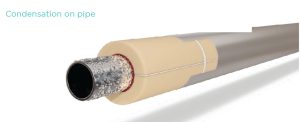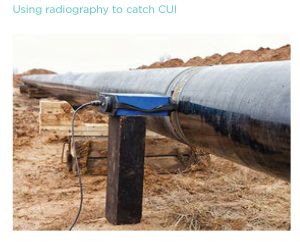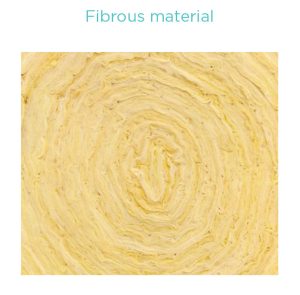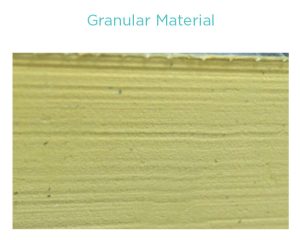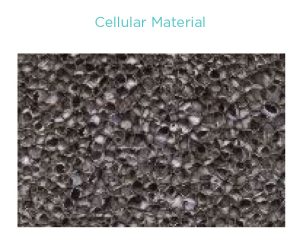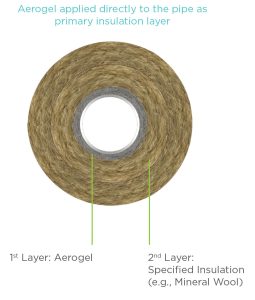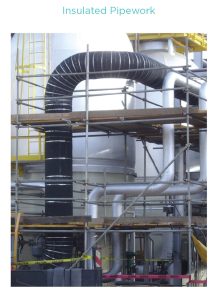Corrosion under Insulation: Sources and Symptoms, and How to Safeguard Your Systems
Metal surfaces (like a pipe, tank, or piece of equipment) can corrode in the presence of moisture. When that moisture is trapped in or under insulation and against the surface of the metal, it creates conditions favorable to developing corrosion under insulation (CUI). CUI is a significant and very expensive problem in the oil, gas, chemical, and industrial sectors. Left unaddressed, CUI leads to worsening operational performance and efficiency, increased maintenance costs (accounting for up to 10% of annual maintenance costs in these industries1), and a serious risk to system integrity and personnel safety.
Unfortunately, CUI is often unaddressed or unnoticed until there is a problem. CUI is an invisible threat because, by its very nature, it exists under the insulation and is not easily visible. The key to preventing CUI is understanding the causes, knowing what to look for and catching it early, and—perhaps most importantly—knowing how to prevent it in the first place.
Causes and Contributors
Corrosion is the result of an electrochemical process that takes place when liquid water combines with oxygen on a metallic surface. Without the presence of moisture, corrosion cannot occur. To determine the cause of CUI, we first need to figure out how moisture is getting under the insulation.
One method by which water may be trapped between the insulation and the metal is moisture ingress. Moisture ingress is the term for the movement of moisture from the outside environment through the vapor barrier and insulation to the metal surface underneath.
Moisture ingress may start with condensation. Moisture will condense on any surface below the dew point temperature, including vapor retarders. If the insulation system is not not adequately protected with a vapor barrier, or the vapor barrier is compromised in some way, the water vapor will condense to liquid water. The moisture then passes through it or can be absorbed into some types of insulation and remain there, unable to escape or evaporate unless the system was designed with weep holes. Trapped moisture can lead to CUI.
Of course, condensation is only one potential cause of moisture ingress. Exterior sources of water, like rainwater, deluge, or liquid spillage, may get into the insulation if it is not properly protected with an adequate jacket or weather barrier.
Understandably, service (or operating) temperature is also a significant factor that can influence the development of corrosion. Low service temperatures are at risk of moisture ingress through condensation, but CUI is by no means limited to low temperatures. If moisture is already present, high temperatures can actually accelerate the chemical reaction of corrosion.
A metal surface may be most susceptible to CUI in higher temperatures, from 120°F to 350°F, due to factors like corrosion kinetics and stress corrosion cracking. The American Petroleum Institute (API) indicates the highest risk is in the temperate range
of 170°F to 230°F.2
Surfaces above 350°F are at lower risk from corrosion because at that temperature the moisture evaporates more readily, and subsequently the vapor drive acts to eject the moisture from the system. However, that is not to say that piping or equipment operating above 350°F is not at risk. There will be windows of time where the temperature will drop, such as during scheduled maintenance or other downtime.
Dual temperature or cycling temperature systems can be particularly challenging. Lower temperatures can create condensation and moisture, and higher temperatures can accelerate the rate of condensation in addition to pressure differences between the outside and the inside driving the moisture through the insulation.
Catch It if You Can
The best way to detect corrosion before it causes significant damage is to inspect the surface. An inspection with the sole purpose of determining the likelihood and consequence of corrosion is called a risk-based inspection (RBI).
The frequency, scale, and scope of the RBI will depend on factors like the likelihood of corrosion, historical rate of corrosion that has been observed in the past, and the consequence of a corrosion-related failure (minor maintenance costs versus major safety issue, for example).
An RBI may simply be a visual inspection. This would involve the physical removal of the jacketing and insulation to visually inspect and physically measure corrosion on a surface. This can be done fully or partially. Full removal of the insulation allows inspection of 100% of the surface but can be a very costly process. A partial inspection allows spot-checks on high-risk areas at a significantly lower cost, but there is the added risk of the insulation and jacketing not being properly replaced in that area. If insulation is incorrectly reinstalled, an area that previously passed inspection and showed little risk of future corrosion can quickly become a problem area. One method of addressing this risk in partial inspections is through the use of inspection ports and plugs, which involves creating a small area without jacketing and insulation, and attaching a watertight plug that can be easily removed to inspect the bare pipe and reapplied and resealed afterwards. That said, API warns that there is still a higher likelihood of CUI damage in areas with insulation plugs, or any areas where the insulation and jacketing is damaged or missing.3
With recent advances in technology, there are now “non- destructive” inspection techniques, which attempt to “see though” the jacketing and insulation to the metal surface below to look for any signs of corrosion. These include many of the same technologies that are used in healthcare, including radiographic/x-ray, ultrasonic/ultrasound, and pulsed-eddy-currents/magnetic resonance imaging.
An owner or operator should consider not only the labor costs but also the accuracy of the tests in the cost-benefit analysis to determine the method of inspection that is right for them.
Making Preparations
When installing and insulating a new system, some basic preparations should always be followed, such as ensuring that the surface is clean, dry, and at ambient temperature before any insulation is applied, making sure the insulation is properly sized for the job, and following the manufacturer’s installation instructions.
A critical step in mitigating CUI is the application of anti-corrosion coatings, sometimes called CUI coatings. Coatings applied directly to the metal can act as a physical barrier, preventing oxygen, moisture, and other contaminants from reaching the metal surface.
Inorganic, metal-based coatings, like thermally sprayed aluminum (TSA), offer an excellent vapor and moisture barrier to protect the underlying metal. There are also organic-based coatings newly available on the market—like epoxy phenolic, epoxy novolac, and high-build epoxy products—some of which may contain corrosion inhibitors.
Different coatings may have different temperature limitations and expected lifespans, depending on composition and application. Some are even recommended for use with specific insulation products.
It is important to think of CUI coatings as the last line of defense in the insulation system. Their barrier may not be impenetrable, and the vapor barrier may not be perfect; however, if the outer protective jacket is compromised, and the insulation underneath the jacket takes on moisture, the coating may provide the needed protection until the issue can be remedied.
The Role of Insulation
Proper installation of insulation can go a long way toward preventing CUI in the first place. There are many types of insulation to choose from, each with its own methods of mitigating the risk of corrosion. In deciding on the insulation product for a specific application, there are a few key questions to consider:
- Are there any annular spaces or crevices that allow for the retention of water and other corrosive media?
- By what mechanism is water prevented from being absorbed into the insulation?
- How likely is the insulation to accelerate or decelerate the rate of corrosion?
The three types of insulation used in the mechanical insulation industry that are discussed in this article are fibrous, granular (including both rigid and flexible), and cellular.
Fibrous Insulation
Fibrous is just what is sounds like: a collection of small-diameter fibers dividing a space into many small air spaces. Examples of fibrous insulation include fiber glass and mineral wool. Fibrous insulation products are generally sold in batts, but they can also be preformed into pipe shells or segments sized to fit a pipe to help reduce annular space. A few contain water-repellant additives, which create a hydrophobic surface to prevent liquid water accumulation while still allowing water vapor to escape. Be aware that most of these water-repellant additives are temperature sensitive, and they may be damaged or destroyed in higher temperature applications.
A fibrous insulation product may also include a corrosion inhibitor, designed so that in the event of moisture ingress, the corrosion inhibitor washes out and travels with the water down to the bare metal, where a chemical reaction takes place to help counteract the effects of water on the metal surface.
Ideally, moisture ingress should be prevented from occurring in the first place, and the metal should have an anti-corrosion coating between it and the insulation.
Rigid Granular Insulation
Rigid granular insulation products like calcium silicate and perlite are rigid, high compression-strength materials, often silica-based, with a granular texture, containing small voids or hollow spaces in the material for air. Granular insulation products are also preformed, typically in blocks, pipe shells, or curved segments. As these products are naturally wicking, their manufacturers add hydrophobic coatings. Some manufacturers also offer corrosion inhibitors that are still effective at high temperatures. Similar to the inhibitors in fibrous products, if the insulation does take on water, the corrosion inhibitors will go with it and help mitigate the risk of corrosion. It is important to note that corrosion inhibitors, whether in insulation products, coatings, or both, can be beneficial when using any type of insulation with the potential to take on water, just as a precaution against the risks of moisture ingress.
Aerogel and Flexible Granular Insulation
Flexible granular insulation consists of microporous or aerogel granules in a fibrous medium, and it has distinct differences from both rigid granular insulation and fibrous insulation. Aerogel specifically is a relatively new technology: a man-made material with as the lightest weight and lightest density material on earth, with typically higher thermal resistance, in a given thickness, versus other non-vacuum based insulations. The aerogel is infused into a thin fibrous blanket for ease of installation. Whereas the air between the fibers is typically the insulator in a fibrous insulation, in this type of insulation, much of the air space in the blanket is replaced with aerogel, giving it higher thermal resistance in a smaller space. The installation of a flexible aerogel blanket involves wrapping it tight against the metal, with a metal jacket applied to the outside. The aerogel material within the blanket has inherent anti-corrosion properties, is hydrophobic to 600°F, and can withstand temperatures as low as -297°F and as high as 1,200°F.
Cellular Insulation
Cellular insulation materials are what is typically referred to as foam. There are open-cell and closed-cell foam products, but closed-cell is quite common when corrosion is of particular concern, as closed-cell materials create a natural barrier to water and water vapor. Rigid closed-cell insulation products, like cellular glass, are installed as pieces or in sections. The closed-cell nature of the foam can be an excellent vapor barrier, but a separate vapor barrier or jacket is still required to prevent moisture from getting in through the seams.
Flexible closed-cell insulation products, like flexible elastomeric foam (FEF), do not rely on an exterior vapor barrier or jacket as a first line of defense to keep out moisture because there are far fewer seams, and the adhesive used to seal them is at least as vapor tight as the insulation. As a result, one common method of installing flexible closed-cell foam insulation in areas of high corrosion risk is to completely adhere the foam insulation directly to the metal surface. This method fully eliminates any annular space between the insulation and the metal surface, so there is no physical space in which water can accumulate.
Hybrid Insulation Approach
In evaluating the pros and cons of different insulation types, including balancing their performance benefits against their material and labor costs, owners and operators have an important choice to make; but that does not mean they have to choose just one. Another industry-recognized practice is to take a hybrid approach, using two different products to get the best of both. Someone could, for example, marry the high compression strength of granular insulation, or the vapor barrier properties of closed-cell insulation, or the low cost of mineral wool, with the extreme hydrophobicity of aerogel.
When the International Association of Oil and Gas Producers (IOGP) released its Joint Industry Programme 33 specification document S-783 – Insulation for Piping and Equipment4, it recommended that for applications at high risk for corrosion, certain insulation products (specific fibrous and rigid products) not come into contact with the metal at all, and instead recommended the use of non-contact methods or aerogel applied directly to the metal piping or equipment as the primary insulation layer (see the aerogel photo on page 22).
Looking Ahead
The Association for Materials Protection and Performance estimates that corrosion currently costs the industry nearly $2.5 trillion. But by being smart and using industry best practices, insulation end users could cut the global cost of corrosion anywhere from 15% to 35%.5
You can do your part. Understand the causes of corrosion and recognize the signs. Use the RBI method to mitigate both costs and risks. Inspect smart and inspect often to catch any minor issues early, before they become major issues. Where possible, apply the optimum insulation system by using the right insulation and coating products for the right application, and making sure everything is properly sealed and insulated.
Be smart. When it comes to the high costs and high risks of CUI, insulate yourself.
References
1. NACE Impact Study, 2016, Annex D
2. API RECOMMENDED PRACTICE 583, 2021, Third Edition
3. ibid
4. IOGP Supplementary Specification to NORSOK M-004, S-783 Insulation for Piping and Equipment, 2020, Joint Industry Programme 33
5. NACE Impact Study, 2016, Annex D
Visit www.insulation.org/designguide to learn more about
product characteristics of thermal insulation materials.
NIA Classification of Materials
Cellular Insulations
• Elastomeric
• Cellular Glass
• Polystyrene
• Expanded Polystyrene (EPS)
• Extruded Polystyrene (XPS)
• Polyisocyanurate
• Polyurethane
• Sprayed Polyurethane Foam
• Poured-in-Place Polyurethane
• Phenolic
• Melamine
• Polyethylene/Polyolefin
• Polyimide
Fibrous Insulations
• Mineral Fiber (Fiberglass and Mineral Wool)
• Fiberglass
• Mineral Wool
• Mineral Fiber Pipe
• Mineral Fiber Blanket
• Mineral Fiber Block and Board
• Textile Glass
• High Temperature Fiber
Granular Insulations
• Flexible Granular
• Microporous
• Silica Aerogels
• Rigid Granular
• Calcium Silicate
• Molded Expanded Perlite
Reflective Insulation


